Introduction
It is assumed in the literature that configuration management is used in the processes of realisation of products/services, mainly for national security and defence. Empirical research carried out in 120 companies shows that it can be successfully applied also in other sectors and industries, as one of the important elements of quality management for each type of product/service, e.g. in logistics. In order to ensure that processes, e.g. design, production and service processes are not ad hoc, partial, inconsistent with requirements, based only on technical documentation, solutions integrated with all stages of product/service implementation should be implemented, such as: definition of customer requirements, planning, development works, operation, service, purchases. This is of particular importance in global markets, in cooperative ventures carried out by many enterprises. Lack of implemented configuration management in accordance with specific reference documents may result in the delivery of a product/service not meeting the quality requirements. Can configuration management really affect the quality of the product/service? The research confirms the relationship between quality management and configuration management in various scopes of documentation in accordance with the ISO 9001 and AQAP 2110 requirements. Those organizations that implement a quality management system in accordance with the AQAP 2110 requirements should implement a configuration management process. The effectiveness of configuration management is conditioned by the repeatability of realisation processes, ensuring the quality and safety level established in the individual stages of the product/service life cycle. Configuration management is fundamental for organizations that offer products/services that affect safety, reliability, interoperability. First of all, it concerns organisations providing products and services, e.g. for the army. Configuration management becomes important for products/services with a high degree of technical and technological complexity. This does not mean that in case of other sectors or services, e.g. construction, medical, transportation, etc. we can exclude the application of configuration requirements. The adopted NATO quality policy clearly states that the basis for operation is an integrated systemic approach to achieve the quality of products/services in the full life cycle. This approach takes into account many factors from the area of organizational and technical-technological activities, including configuration management. It is understood as a continuous maintenance of the product’s compliance with the requirements specified in the individual phases of realisation, i.e.: with customer requirements, concept, design, development, production or exploitation, including renovation, possible modernization and liquidation, the need to make and supervise changes. The lack of supervision over the changes made makes it difficult or even impossible to achieve certain functional and physical properties of the product/service. An important problem to ensure the quality requirements of a product/service is the assessment of configuration management. This problem requires effective methods based on modern techniques and scientific tools. In ensuring the quality requirements of the product/service, there has been no uniform approach to configuration management so far. To this day, many Polish companies, having clearly formulated requirements, have not taken the trouble to implement them, risking that they fail to meet customers’ requirements, subjecting themselves to non-compliance and complaints. The paper is addressed not only to enterprises planning to conclude contracts for products/services for security and defence purposes, but also to those organisations that want to have proof that their product meets certain quality requirements.
Configuration Management In Terms of The Analysis of Normative Documents
In the processes of realization of products/services, there is usually a need to make organizational, technological and technical changes. They result from customer requirements and unforeseen external and internal situations in an enterprise The lack of supervision over the implemented changes in the configuration management process makes it difficult or impossible to achieve the expected quality characteristics of products/services. This is a problem that requires the use of effective methods based on modern management tools, such as the configuration management.
Until the allied document on mutual acceptance of the Government Quality Assurance process was implemented and the allied AQAP quality assurance publications, STANAG 4107 was used, in the process of the assurance of quality requirements for products/services, no uniform approach to the configuration management had been applied under industrial conditions.
The situation changed after the implementation of NATO standardization publications on AQAP quality assurance. These publications emphasize that the implementation of configuration management is the basis for effective product lifecycle management (Pokora 2016).
The basic document used in configuration management is the AQAP 2110 standardization publication on quality assurance (AQAP 2016). Configuration management as described in item 5.4.1.2 of this document is intended to implement planning, identification, supervision of changes, description of configuration status and configuration audits in accordance with the requirements of ACMP 2100 (ACMP 2017). Configuration management is one of NATO’s requirements for quality management, which is why it was STANAG 4427, 3rd edition that introduced allied ACMP configuration management publications. Detailed requirements and guidelines for configuration management are the part of the ACMP publications and other additional clauses being the part of contracts or other equivalent national documents. One of them is the ISO 10007 quality management series standard, which contains configuration management guidelines (PN-EN 2018). It is referenced for use in the requirements of AQAP 2110:2016 (including ACMP 2100:2017). It should be noted that ACMP 2100 contains NATO’s contractual requirements for configuration management in all stages of the product/service life cycle. When considering documents relevant to product/service configuration management, we cannot omit ACMP 2000 and ACMP 2009 because of their detailed information on NATO policies and requirements relating to the scope of the subject matter. The information contained in ACMP 2009 (2017) is important for the development of the configuration management life cycle plan, i.e. for planning the provision of the required resources for ongoing contracts. This document is the adaptation of the requirements of ISO 10007 and additional directives and requirements specific to NATO. This publication helps to identify processes and define needs for configuration management. In addition, this paper supports the organization in planning configuration management activities throughout the full product life cycle. ACMP 2000, on the other hand, highlights the importance of NATO’s Systems Life Cycle Management (SLCM) policy by making configuration management a mandatory management process for NATO programmes and systems over the full life cycle of a product/service, in order to achieve interoperability, risk reduction and effective use of NATO capabilities in joint operations. If these requirements were insufficient in relation to actual needs in all stages of the product life cycle, they may be further specified by means of an appropriate guide and added to the order. Documents indicate that the configuration management system should be established, documented, used, maintained, evaluated and improved. The publications have been developed to provide requirements for configuration management with regard to the quality of products/services in joint NATO international projects and national programmes. They provide detailed guidance on planning, configuration identification, control, status and audit, measuring and evaluating performance for executives and managers at different organizational levels. Although they have been developed with security quality requirements in mind, they should also be used by the civil sector due to the increasing quality requirements of its customers.
While reviewing normative documents in this subject matter area, we cannot omit basic standards from the ISO family such as: ISO 9000, ISO 9001. AQAP standardization publications containing contractual requirements for the quality management system of suppliers of products/services use international standards from the ISO 9000 family, in terms of:
- terminology and definitions compliant with ISO 9000:2015,
- quality requirements compliant with ISO 9001:2015.
Based on ISO 9001, AQAP 2110 requirements have been developed to complement the basic requirements in quality management. This is particularly important for the design and development of a product/service and the need to establish configuration management procedures. In such processes there is generally a need for changes resulting from reviews, verification and validation (ISO 9000 2015). Then the lack of supervision over the introduced changes makes it difficult or even impossible to achieve certain functional and physical properties of the product/service. However, at the stage of production processes, configuration management is limited to the supervision over execution and to introducing deviations or changes not affecting the functional and physical properties of the devices.
Scope of application of configuration management with regard to safety and product quality
Configuration management requires a different view of the essence of management, especially with regard to product decomposition by degree of its complexity and innovation (Pokora, Świderski 2006). This is a concept that applies to comprehensive customer service in networks. Such networks can be formed by: product manufacturers, suppliers of components, spare parts, exploitation packages and training centres for operators of products on site. Such a way of customer service causes changes in the technical preparation of the product, which boil down to a different look at the product and documentation of knowledge than before (Pole 2007). In order to ensure proper identification and traceability of products or services, in accordance with the requirements of AQAP 2110, a configuration management procedure should be implemented in order to continuously maintain the compliance of the product/service with the requirements set out in the documentation created at individual phases of the implementation process. The conceptual meaning of the essence of configuration management is shown in Figure 1.
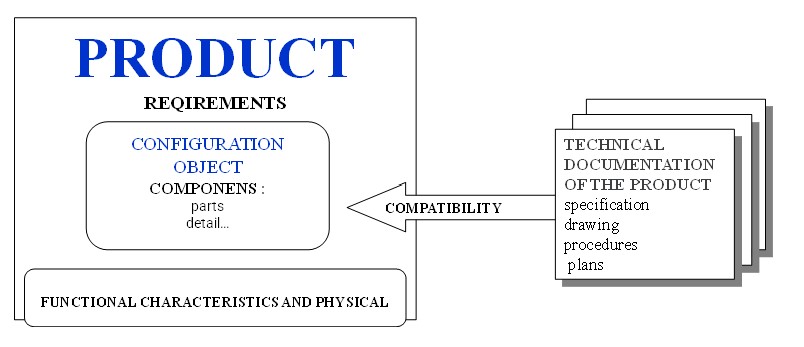
Fig. 1: The essence of configuration management
(author’s own development)
How can we read the essence of configuration management by using ACMP documents? Figure 1 shows a simple relationship which defines that, in classical terms, configuration is the functional and physical characteristics of a product/service as defined in the technical documents and obtained in the final product. On the other hand, product/service configuration management is understood as organisational, technical-technological and administrative activities consisting in supervising the compliance of functional and physical characteristics of manufactured products/services with the requirements specified in the documents. The observation and direct interview of the device/service configuration management organizations indicates that the configuration defined in this way has its reference in the practice of manufacturing processes. Due to its nature, it is an instrument supporting quality management of products/services. In the quality management system, they provide up-to-date information on the status of product realization at particular stages in relation to the quality requirements of the customer.
We must remember that configuration management applies at various stages of the product/service life cycle. This approach should be highlighted and promoted among organisations. Figure 2 indicates at which stages of the product/service life cycle we should refer to configuration management.
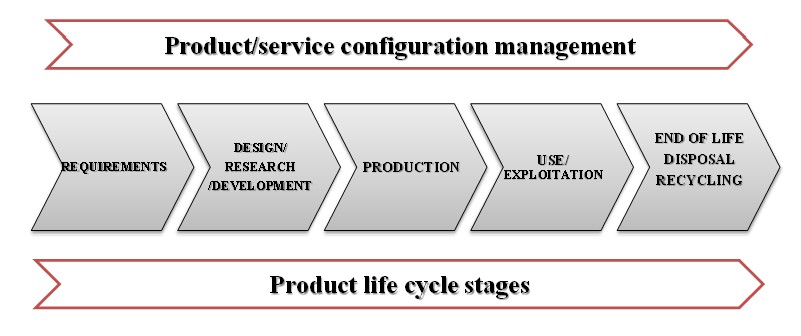
Fig. 2: Configuration management at individual stages of the product/service life cycle
(author’s own development)
An analysis of configuration management applications in organisations has shown that it should be implemented and cover such phases of the life cycle of a defence product as:
- definition and review of a product’s requirements,
- design, research and development of a product,
- production of a product,
- use of a product,
- end of life.
Each of these stages is important in the configuration management process. From the point of view of determining the customer’s requirements, failure to document quality requirements, their incompleteness or ambiguity may lead to many misunderstandings with the recipient and the internal customer at the stage of handing over the product/service to the next stage. On the basis of an unambiguously identified configuration resulting from the requirements review phase, the documentation of the design work (if applicable), in relation to the relevant physical and logistical functional characteristics, is essential. It is about determining the reference configuration and decomposition, i.e. extracting the objects of configuration from the structure of the designed product. It should be remembered that design is not necessarily part of every order. Orders for serial production or a finished product, e.g. on entrusted documentation, do not require configuration management in the design area. The next stage of research and development should involve the assessment of the design input data through the verification or validation of a model, prototype or first unit of a manufactured object of configuration or the entire product/service. The stage of product/service implementation (production) in relation to configuration management is a consequence of design and development works based on approved technical documentation. In the case of unit production, carried out as part of design and development work, proof of fulfilment of the quality and safety requirements shall be the specified reference configuration, including the results of configuration audits carried out, and in the case of series production, proof of fulfilment of the requirements shall be the relevant inspection and test records. Lack of configuration management at this stage may lead to uncontrolled deviations and changes to the previously approved reference configurations (Pokora 2006). The manufactured product/service, including all systems, assemblies and parts, has a built-in configuration. At this stage, a properly defined configuration should ensure that the product can be used, operated and repaired properly, including the distribution of necessary parts. The user relies on properly identified configuration in earlier phases of the product life cycle. A specific area that applies to all phases is a purchase. Configuration management is required in terms of ordered products as configuration objects, in the form of a finished product coming from the market or a product designed and manufactured by a co-operator (Pokora 2006). It follows that configuration management has a scope of application, determined by phases of the life cycle and the nature of application related to the specificity of the product or service. In accordance with the requirements of AQAP 2110, configuration management should function according to the principles, e.g. present in the form of a documented configuration management procedure. Although formally there is no requirement to implement a documented configuration management procedure, good practice observed in the organisations under investigation indicates such a need, even due to the rotation of personnel and many other factors influencing the disturbance of manufacturing processes, negative for the quality and safety of the device/service.
It is good if such a procedure describes actions concerning e.g:
- responsibility for configuration management, including parties involved in the organisation and beyond,
- identification of the configuration, i.e. description of the product/service taking into account functional and physical characteristics, applicable phases of the product/service life cycle, designation of the objects of configuration and reference configuration, introduction of the principle of numbering or marking, with reference to the necessary principles,
- configuration control with consideration of particular stages of execution,
- characterisation of the configuration status, which can be included in the description of configuration identification, control or audit,
- configuration auditing, including the rules of their execution,
- the configuration management planning.
Please note that this is not a closed list. In addition to the description of these basic areas of activity, its individual elements can be developed and clarified. It depends on the specificity of the organization and the degree of complexity of the product/service. Configuration management in the various phases of the product life cycle is designed to prevent incompatibility of functional and physical characteristics of the product/service only in the final phase of a product receipt or at the product usage phase. The costs of removing the causes and effects of customer complaints are disproportionate to the costs incurred in order to implement additional requirements in the quality management system securing the quality and safety of the product/service. The studies and analyses carried out (Szkoda 2002, Hordyniak 2007) support the thesis that changes should be implemented at the design stage, as the effects resulting from these changes are still disproportionate in relation to losses at the production stage or the use stage for a given product. It is estimated that the cost of error elimination is 1 : 10 : 100. The cost of error elimination in the analysis and design phase is one unit. The cost to eliminate the same error in the production phase is 10 units. If an error is identified in the course of use, e.g. of a machine, device or service, it can be expected that its removal will imply 100 times greater costs than repair after the error is detected in the initial production phases (Hordyniak 2007). These relationships are shown in Figure 3.
Surveys carried out in 2016-2017 on a sample of 120 audited companies indicate a similar relationship to that described in the cited works.

Fig. 3: Dependencies of the costs of error elimination in the product/service life cycle
(own study based on Hordyniak 2007)
The analysis of incurred costs of non-compliant products/services was carried out on the basis of the organisation’s complaint documentation, actions eliminating the causes of non-compliance, in order to avoid their recurrence and on the basis of reviews of the effectiveness of corrective and remedial actions taken. The results were collected and compiled in the auditor’s reports. The effectiveness of the quality management system, including processes generating the highest costs, can be ensured in the process of quality planning and implementation monitoring in terms of compliance with the planned activities.
Systemic approach to configuration management affecting product/service quality and safety
Can we present configuration management in a system perspective? If the system is defined as a set of interrelated elements, tasks, activities functioning as a whole, for which borders, inputs and outputs and processing processes can be defined, then we definitely can present the configuration management in a system perspective. When identifying processes in the quality management system in accordance with the AQAP requirements (item 4.2), configuration management shall be included in the system documentation. Is this approach respected in organizations? Do you see the importance of this requirement in terms of product quality and safety of customers? Out of 120 surveyed organisations, which believe that they have a quality management system in place, 30% have not implemented configuration management in practice. There was only formal system documentation. It is not enough just to formally map the identified processes (example in Figure 4), define their sequence and interaction, establish criteria of the method to evaluate these processes, and even develop a configuration management procedure if this is not implemented in practice.
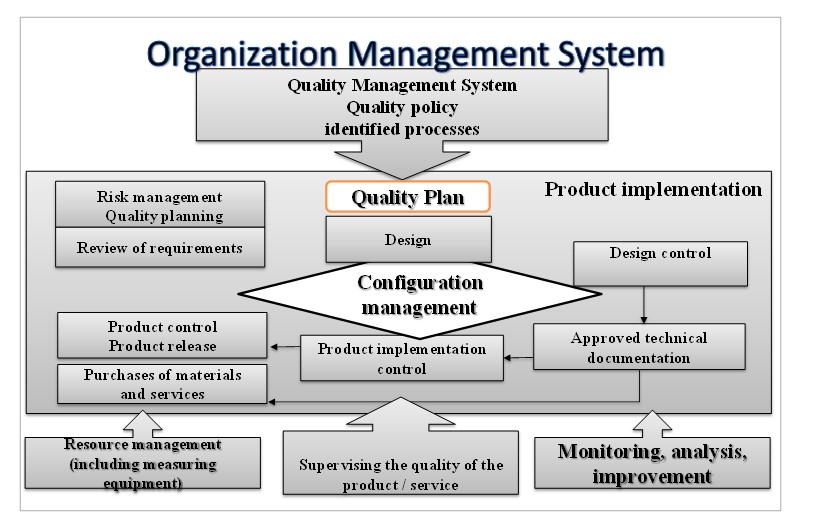
Fig. 4: Sample map of processes in the organization including configuration management author’s own development
If the formal documentation is not followed by ensuring that the technical, technological, organisational and logistical characteristics of the products/services comply with the agreed technical documentation and by preventing unauthorized changes to this documentation, according to the implemented documented procedure, the configuration management process does not work, it is fictional.
An effective configuration management process ensures that the manufactured product/service conforms to requirements that are described in sufficient detail to allow interchangeability, safe use and maintenance, as well as modifications, repairs and upgrades during the product life cycle. What does that mean in practice? In practice, it means implementing the four basic elements of configuration management (ACMP 2100):
- identification of a configuration that includes a product as a configuration object and its subdivision into further configuration objects, against which activities related to the necessary tests and controls and the marking, documentation, review and approval are undertaken at specific stages,
- configuration control regarding the definition of a uniform system for monitoring changes to objects and descriptive documents,
- characterization of configuration status, which includes a system for informing and reporting the current status of configuration objects in the life cycle,
- configuration auditing, which concerns the formal assessment of the conformity of configuration objects with the requirements of the designed product before production.
Figure 5 illustrates, in a conceptual way, the elements of configuration management that should be included by an organization in its management system for the safety and quality of the product/service during its life cycle.
The basis for configuration management is to determine the necessary reference configurations, i.e. approved sets of documents that characterize a product or service at a given stage. What kind of documents are they? These are the ones that practically define the client’s requirements when confronted with the organization’s performance capabilities. The order/contract will not be properly executed if the configuration is not clearly documented at this stage. Important elements of configuration identification include the definition of product/service structure. Based on the proper structure of a product or service, it is possible to select the objects of configuration. It should be determined by decomposition taking into account the division into: product (systems, installations, assemblies, sub-assemblies, devices, aggregates, details, parts; service (implementation stages, methods used, equipment used). Making the right selection of objects allows for efficient configuration management. The configuration objects should be determined according to specific selection criteria.
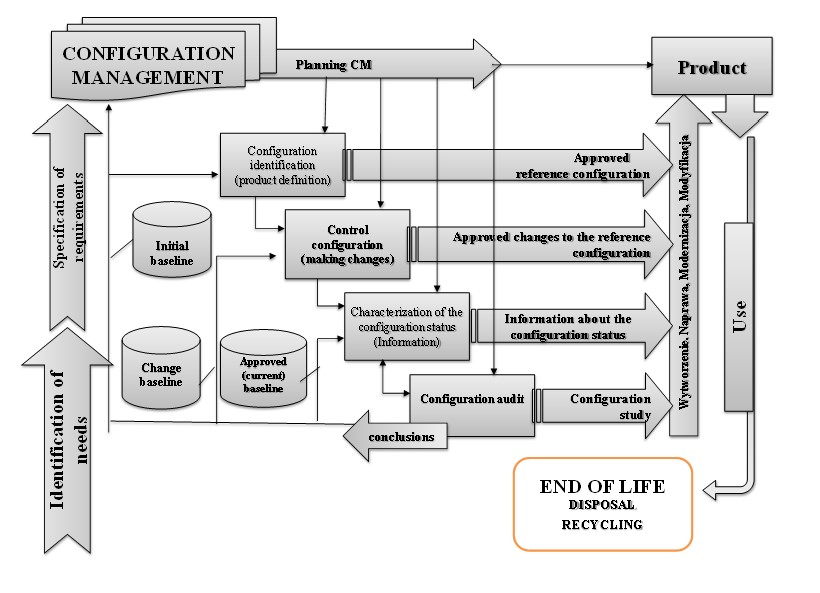
Fig. 5: Basic elements of configuration management for safety and quality of the product/service in the life cycle author’s own development
The criteria for the selection of configuration objects are primarily defined in the contract but may also result from the application of the product. Criteria may concern e.g.: technology, safety of use, reliability (harmlessness, durability). Depending on the type of project being implemented, it is possible to select one configuration object or as many as necessary for efficient configuration management taking into account the adopted criteria. What is configuration control used for in practice? It serves to ensure that no unauthorised changes or deviations are made to the approved configuration (reference configuration) documentation. A distinction is made between pre-execution deviations, called authorisations, which may constitute an approved reference configuration or post-execution deviations applicable to a non-compliant product or service (Pokora 2016). Configuration control may concern configuration objects with regard to change proposals generated from three sources: from the customer, from the supplier, from the organization.
Another element of configuration management is the status characterization, i.e. formal registration and information about established documents, status of proposed changes and status of approved changes (ISO 10007). It should be determined at the product/service design stage what will be the form of records and registration of documents. Of course, it is important to agree to this form with the customer or contractors of other configuration objects. Configuration management as a tool ensures full identification and traceability (Dutkiewicz 2016). This is especially important for an organization in case of a complaint, when we have the possibility to reconstruct the history of a product/service. Therefore, documents used in configuration management should include, among others: identification numbers, names, date of entry into force, release status, changes, change history, unambiguous designation of documents, part numbers, etc.
It is important for the security of the organization that, as part of the characterization of the configuration status, the following documents are kept, among others: lists of documents defining necessary reference configurations, lists of configuration objects and their decomposition, registers of changes, permissions and/or deviations, configuration audit reports and others. Arrangements to characterize the configuration status end with the approval of the documentation describing the product or service after their validation and positive results of configuration audits. Configuration audits are a formal verification of the product’s compliance with the functional and/or physical characteristics of the products. Configuration audits should be planned as part of the project at the product or service design stage. They do not replace verifications, reviews, studies and controls, but concern the results of these activities.
If an organization has the ambition to build and implement a correct quality management system based on the AQAP requirements, it should obligatorily use all the basic configuration management elements described above (Figure 6). If it does not do so (30%), it potentially allows for unauthorized changes in the established product/service configuration and configuration documentation. This may affect the inefficiency of processes supporting the use of the product.
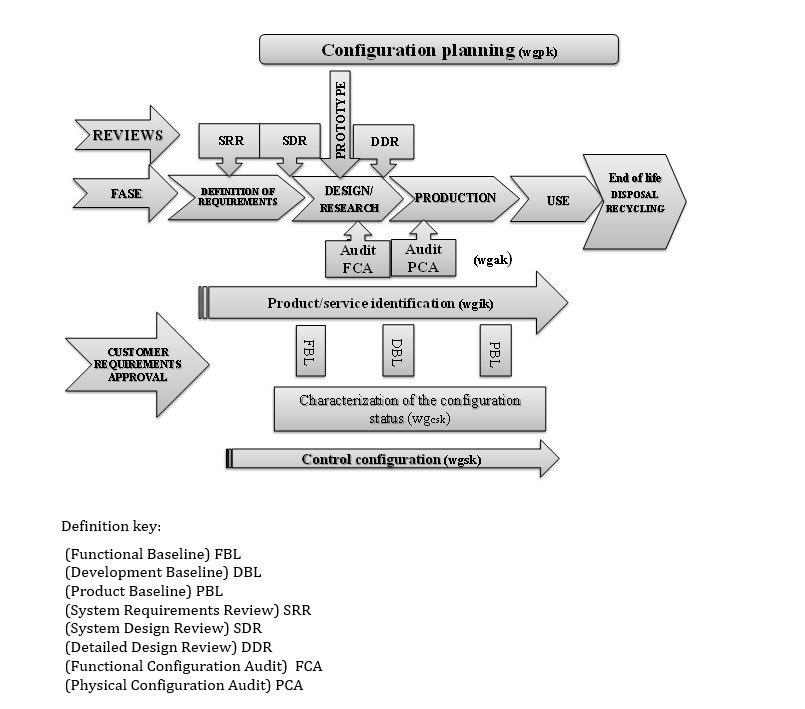
Fig. 6: Structure of the configuration management model in relation to the product life cycle author’s own development
Lack of effectiveness may result in the delivery of products/services that do not meet the quality requirements, potentially affecting the process of use and user safety, i.e. customer complaints. The requirements necessitate implementing such a system so that each identified process can be monitored and supervised (AQAP 2110). The quality management system according to AQAP allows for a comprehensive approach to the planning and execution of operational processes necessary for the execution of products and/or services and is an important business element in correlation with the needs and requirements of the customer.
Example methodology for assessing the effectiveness of product/service configuration management
Ensuring quality requirements in product/service implementation processes is achieved through effective configuration management. It should be assumed that where manufacturers of products/services cannot effectively manage the configuration, they cannot ensure that quality requirements are met. One of the very important scientific and practical problems is the knowledge and ability to assess the effectiveness of product/service configuration management as part of the evaluation of processes in the organization. In systems, an important problem in ensuring the quality requirements of a product/service is the assessment of the effectiveness of configuration management (AQAP 2110). It is generally accepted that configuration management is effective if the final product is accepted by the contracting authority. This is too simplistic a qualitative method. According to analyses, about 70% of the surveyed organisations apply such simplification. And yet, if we refer systematically to the product/service configuration management model (Figure 7), the assessment problem is more complex. Each of the elements of the model contains a set of activities with different degrees of differentiation and suitability in relation to the requirements. Configuration management is one of many processes in organizations and should be subject to the same procedure for effectiveness assessment procedure based on the adopted model. Figure 6 illustrates the concept of a model for assessing the effectiveness of configuration management process, which is used in audit research.
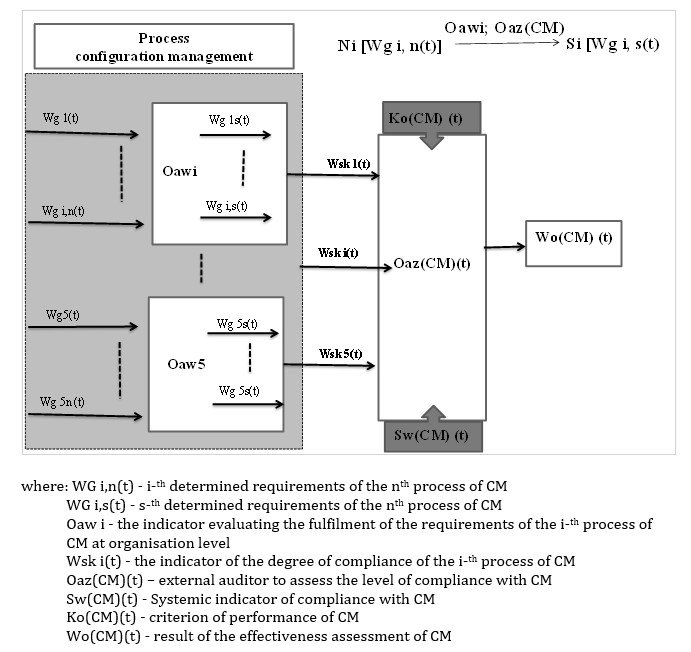
Fig. 7: Model of evaluation of the effectiveness of the configuration management process (the in-house elaboration on the basis of: (Szkoda, Wojciechowski, Dębicka 2011).
In the assessment model of the configuration management process, the proper selection of assessment criteria and assessment indicators plays a special role as it clearly influences the effectiveness of the assessment. In addition, we can assume that the improvement actions taken will not have a positive impact on changes in configuration management if the assessment of effectiveness is not based on the substantive basis (requirements, knowledge, resources, procedures, methods and others).
To assess the configuration management process, we can identify a set of requirements (WG) according to the product/service configuration management model (Figure 5).
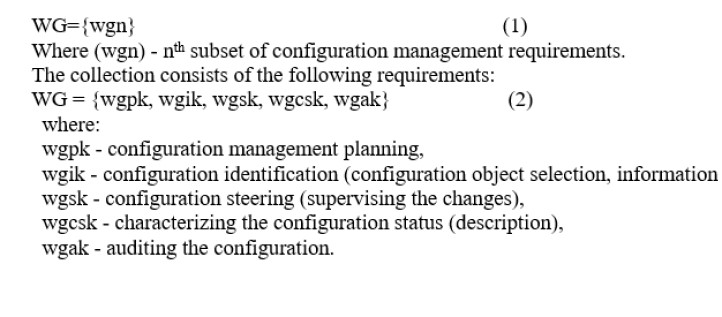
The number of the set of established requirements (1), (2), concerning configuration management is determined on the basis of reference documents (ISO 9001, AQAP 2110, ACMP2100, other contract documents), while the quantity of the set of fulfilled requirements can be determined on the basis of an audit. The [Oawi] organisation and the external auditor [Oaz(CM)(t)] on the set of requirements [WG i,n(t)] at the time t determine the quantity of the collection [WG i,s(t)] at the time t, according to a specific relationship (3).

An example of an audit analysis to assess the effectiveness of the configuration management process is presented in Table 1.
Tab. 1. An example of an audit of the configuration management process in an organization
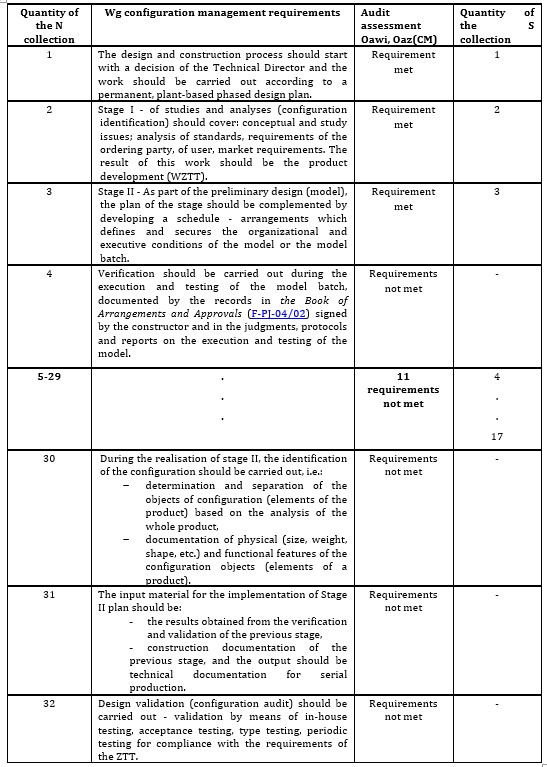
The analysis of the sample taken in the selected example shows that the company did not meet as many as 15 requirements out of 32 ones. Corrective or correcting actions are required in relation to the identified non-compliant areas. Assuming that the effectiveness of configuration management is the extent to which the achieved results of the configuration management process at time t correspond to certain evaluation criteria for the nthrequirements of the configuration management process at time t, we can determine the value of the effectiveness indicator by relationship (4):

A formally defined assessment of the effectiveness of configuration management, including an indicator (4), consists of a positive or negative statement based on the following principle:
If Wo(CM) is ≥ 1 then the configuration management process is effective
If Wo(CM) is< 1 then the configuration management process is ineffective
The assessment of configuration management efficiency is graphically interpreted in Figure 6.
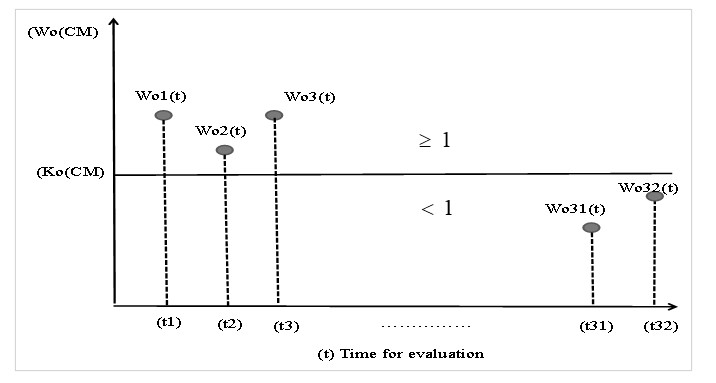
Fig. 8: Graphical interpretation of an example of the effectiveness of the configuration management process
The assessment of the effectiveness of the configuration management process is a prerequisite for the rational management of the entire quality management system, particularly in accordance with the AQAP requirements. The results of the effectiveness assessment are important information for managers as to whether the system works or needs to be improved. It is important that the assessment of effectiveness is carried out systematically and according to a plan.
Conclusion
The use of AQAP standardisation documents as part of the management system should be a basic quality requirement for products/services in which safety risks have been identified. All participants in the life cycle of a product, and especially organizations that manufacture products, e.g. for national security and defence, should be prepared to meet the AQAP requirements. They must adapt their quality management systems and have the necessary experience to ensure the expected quality. The quality management system standards compliant with ISO 9001 and AQAP have become the basic instrument for meeting the quality requirements of products/services and competitive-marketing activities of enterprises. Implementation of the quality management system requires the organisation to comply with the established requirements in accordance with the reference documents. The NATO requirements for quality assurance of products/services purchased e.g. for the military can be used by all organisations and industries. Fulfillment of the AQAP requirements is not conditioned by the size, legal status and ownership structure of the entity realising a given product. They can also be used to improve the quality management system for all organizations with implemented quality management systems. The AQAP document requires the establishment, documentation, implementation and improvement of a quality management system, including configuration management. Only the AQAP-compliant system in operation increases confidence in the organisation in terms of product/service quality.
The main objective in the NATO quality management is to obtain a product that is safe and meets the customer’s requirements. Empirical research carried out in 120 companies shows that configuration management generally enables efficient execution of processes, ensures identification and traceability, access to accurate information, although not in all companies. 30% of them did not implement configuration management in practice, while 24% implemented ineffectively, e.g. did not identify the product, did not manage changes (controlling), etc.
Since configuration management problems are solved in different ways, not always satisfying customers, the proposed solutions aim to unify the approach to configuration management in the actions taken by product/service manufacturers. Organisations interested in providing quality and user safety requirements may use the test-verified assessment model to assess the effectiveness of configuration management.
The presented model proposal and methodology for assessing the effectiveness of product/service configuration management is not perfect, but may be used to correct or improve the process.
Attention should be paid to the practical aspect. The configuration management process is intended to increase the efficiency of the entire quality management system, not generate incompatibilities.
Configuration management is a new look at the product, its features, properties and development. Identification of the configuration is becoming particularly important today, as the products offered are characterized by increasing complexity. Customer service is changing and new decision-making centres are being set up: the supervision centre and the execution centres.
Generally, configuration management in the product/service life cycle allows for:
- process standardization,
- ensuring product/service repeatability,
- systematic supervision, monitoring and control,
- support of the usage process.
The article provides a basis for further research to solve practical problems of product/service configuration management. It recommends, in order to improve the efficiency of systems, that configuration management should be one of the basic requirements in a quality management system. A modern approach in quality management systems should be related to the design of validated configuration management models that would be the basis for ensuring the required level of safety and quality of products/services.
References
- ACMP 2000 (2017). Policy on configuration management , NATO NSA.
- ACMP 2009 (2017). Guidelines for configuration management, NATO NSA.
- ACMP 2100 (2017). The core set of configuration management contractual requirements, NATO NSA.
- AQAP 2110 (2016). NATO requirements for quality assurance in design, development and production, D (1), NSA, Bruksela.
- AQAP 2000 (2009). NATO policy regarding an integrated approach to quality during the product life cycle Polityka NATO, NATO NSA.
- Dutkiewicz, D. (2016), „Traceability and product safety”, GMiL (10), 34 – 48.
- Gręzicki, M. and Pokora, W. (2016), „The role of configuration management in ensuring the security of military equipment”, GMiL(10), 1 – 16.
- ISO 9000 (2015), Quality management systems. Basics and terminology, PKN.
- ISO 9001 (2015), Quality management systems. Requirements, PKN.
- ISO 10007 (2018), Quality management – Configuration management guidelines, PKN.
- Pokora, W. (2016), „Quality issues in obtaining defense products Problematyka”, GMiL,10, 9 – 15.
- Pokora, W. (2006), Managing the configuration of defense products in ensuring the quality logistics requirements of the armed forces , AON.
- Polak, A.S., (2007), „Configuration management in machine building practice”, Problemy Jakości (4), 35-39.
- STANAG 4107 (2009), Mutual acceptance of the Government Quality Assurance process and the use of allied AQAP quality assurance publications, NATO HQ Bruksela.
- Szkoda, J. (2002), Quality management in the processes of implementing machines and technical devices, UWM, Olsztyn .
- Szkoda, J., Pokora, W. and Świderski, A. (2006), „Configuration management – NATO requirements”, (AQAP), Problemy Jakości (8), 18-23.
- Wojciechowski, A., Szkoda, J. and Dębicka, E. (2011), Evaluation of the effectiveness of the quality management system of vehicle control stations”, Logistyka (3).
- Zając, R.(2007), Technical design review as a tool supporting the design process, Maszyny Górnicze (3), 57-61.















